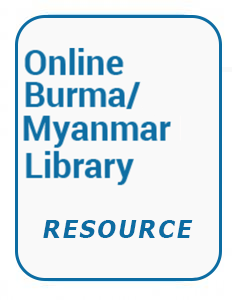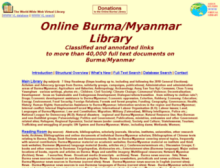Resource information
... Unleashing the potential of community forest (CF) enterprise in Myanmar is crucial for two main reasons. First, it will increase local incomes and government revenues, which will reduce poverty. Second, the financial incentive of such enterprises will encourage local people to manage and restore forests. Without enlisting the help of rural communities in these efforts it is likely that forest loss will continue and the contribution of forests to the rural economy will continue to decline.
The rate of forest loss in Myanmar is among the highest in the world, running at 0.9 per cent per year between 2000 and 2010. The forest sector’s importance to the overall
economy has declined in this time, from 0.6 per cent in 2006-2007 to 0.38 per cent in 2010-2011. Myanmar’s overall economy is now beginning to grow but at least 26 per cent
of the population remain in poverty – mostly in rural areas. Turning this around will require the development of new economic opportunities in rural areas, of which community forest enterprises are a critical part.
A number of immediate steps are needed to develop community forest enterprise opportunities. Forest legislation should allow communities commercial-use rights for both timber and non-timber forest products (NTFPs). Government and civil society should work together to raise community awareness of these commercial enterprise opportunities, and a market-led approach to community forestry be pursued. The handover of local forests to Forest User Groups (FUGs) should be streamlined and accelerated. A working group of government extension staff and civil society groups should share experiences and expand capacity-building for FUGs in business management. Organisation between community FUGs should be encouraged, through local associations and regional and national federations. A reliable investment environment should be assured to facilitate enterprise development.
Field research from four states presented in this report highlights particularly promising community forestry enterprise opportunities. Bamboos appear to be the highest-priority product for enterprise development in the Ayeyarwady Delta, with timber (and potentially timber poles) and charcoal taking the second and third positions respectively. In the Mandalay Region, bamboo has the highest potential for enterprise development, with
timber and value-added bamboos taking the second and the third positions respectively. In Shan State, thatch appears to have the highest potential, followed by value-added
bamboos and bamboo. Finally, in Kachin State, timber appears to be the best option, with medicinal plants and firewood coming in at second and third.
Overall – and despite some significant regional differences – our analysis points to three major sectors for CF enterprise development: timber (including poles and posts), bamboo (including both unprocessed and processed products) and NTFPs – particularly medicinal and ornamental plants. There are also many miscellaneous products with great potential for CF enterprises, such as charcoal, rattan, agarwood, thanaka, elephant foot yam, white viii www.iied.org yam and so on. These can be integrated successfully as agricultural crops along with forest trees in the CF areas. This analysis clearly challenges the current monopoly on timber production by government agencies and ‘crony’ companies.
Progress towards the government’s Forest Master Plan target of 918,000 hectares of community forestry by 2030 is drastically behind, in part because local communities
do not perceive clearly the economic opportunity outlined. But even this target (2.8 per cent of the total forest area in Myanmar) is extraordinarily unambitious. A much more
reasonable ambition might be a government target of allocating 25 per cent of the total area of Myanmar forest to communities – matching roughly the global average for forest controlled by local groups. Doing this by 2030 could make six million people forest user group members, which would make community forestry a genuine engine of rural
economic growth. We outline some of the forest products upon which such community forestry enterprises might be based, and recommend regional clustering to improve scale
efficiencies and competitiveness.
A number of key challenges were found to underpin the slow development of community forest enterprises. The report explores each and proposes a solution. There is weak
political commitment to community forestry, and this requires more vigorous mobilisation and awareness-raising of its economic potential. Forest officers tend to lack interest in community forestry enterprise, when in fact it should be mainstreamed into the Forest Department’s normal operation procedures under a dedicated department. Tenure and use rights to commercial land and its resources are insecure, requiring the enactment and implementation of a national land-use policy and plan that grants community forest user groups (CFUGs) commercial forest use rights. The shortage of investment requires more accessible bank loans, membership saving schemes, supplier-buyer partnerships, insurance schemes and a further simplification of export requirements. A widespread lack
of business skills among communities requires more extensive training, workshops and exchange visits. The lack of technology requires concerted research and development
by government and academic institutions. Weak community participation in turn requires better mobilisation and awareness-raising of financial opportunities.
Business and financial-support services will need to be strengthened to bring about this transformation. But the market-led approach to community forestry fits perfectly
with the government of Myanmar’s new emphasis on support for small and medium enterprises (SMEs), spearheaded by the president. SMEs constitute the largest sector within Myanmar’s economy in terms of number, contribution to employment, output and investment – playing a vital role in the country’s economic development. Community forestry enterprises could make a vital contribution to such development. But it will require concerted effort and a strong partnership between government and civil society groups to install a market-led approach to community forestry...


